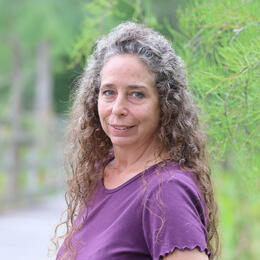In February, Corkscrew Swamp Sanctuary recorded the lowest monthly rainfall since 1971—about one-tenth of an inch. In fact, every month since September, our rainfall has been below average. While swamp water levels are currently within the typical range for the past two decades, they are falling quickly and, when combined with high daytime temperatures, are leaving the land very dry. Click here to see the February water level and rainfall graphs.
Because fire danger is increasing, the Florida Forest Service has issued a “Burn Ban” for Collier and Hendry Counties, bringing the prescribed burn season at the Sanctuary to a close. This also means that residents in these counties are prohibited from burning yard waste—one of the leading causes of wildfires in Florida.
An abundance of dead and downed trees and debris that remains in many areas following Hurricane Ian makes the potential for lightning strike-induced fire extreme. Dried limbs touching power lines can also spark fires. This was likely the cause of a wildfire that burned approximately 300 acres last week, just a few miles away from the Sanctuary. While no one was injured, the fire destroyed several homes, other buildings, and vehicles.
Property owners are responsible for maintaining the trees on their property before they get too close to power lines. If you see vegetation touching power lines on your property, call your power utility company right away to request a line-clearing consultation. Residents are also encouraged to maintain low-fuel landscaping and to create a 30- to 100-foot defensible space around homes, sheds, and barns.
The threat of wildfire can also be reduced by disposing of cigarette butts appropriately, avoiding parking vehicles and equipment with hot motors on grass, and being particularly careful with any outdoor activity that may create sparks.




